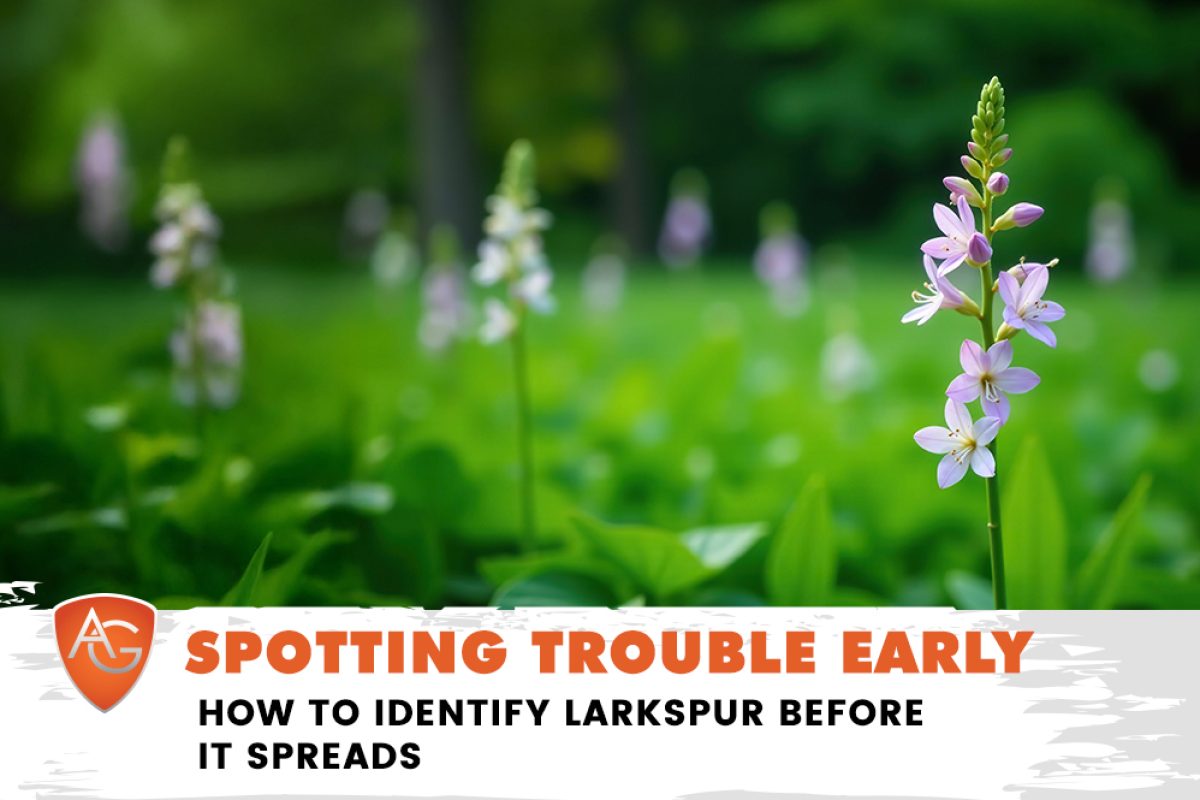Overview: Larkspur is highly toxic to cattle and widespread across Laramie County and Wyoming pastures. Learn how to identify it early this spring — before it spreads or causes livestock losses. Read on!
Larkspur is one of the most toxic plants cattle can encounter in the high plains and mountain foothills. For ranchers across Laramie County and Wyoming, spring is the season to keep a sharp eye out. This isn’t just about weeds but is also about livestock safety and protecting your grazing rotation before summer hits full swing.
Here’s what you need to know to spot Larkspur early — before it spreads and causes real trouble!
Why Larkspur Is a Big Deal
There are several species of Larkspur in our region, but all of them pose a serious threat to cattle. The alkaloids in the plant can cause sudden death, especially in early spring when other forage is limited and cattle are less selective in their grazing.
Even small amounts can cause symptoms like:
-
Muscle weakness
-
Trembling or staggering
-
Respiratory paralysis
Toxicity is highest in the early growth stages—right when pastures are just starting to green up.
>> Related Reading: Adverse Effects of Larkspur on Cattle
When & Where to Watch
Larkspur tends to grow in:
-
Higher elevation pastures
-
North-facing slopes
-
Areas with moist soil and good drainage
-
Parts of the pasture that were lightly grazed or left untouched last year
It often emerges in April and May, depending on elevation, and can be difficult to distinguish from other broad-leaf plants unless you know what to look for.
How to Identify Larkspur Early
Spotting Larkspur before it blooms is key to managing it. Here’s what to look for in the vegetative stage:
Leaves: Deeply lobed and palm-shaped, often resembling parsley or buttercup leaves
Growth: Forms low clumps early in the season, then shoots up with hollow stems as it matures
Color: Bluish-green or grayish hue
Flowers (if present): Deep blue to purple with a spur at the back—hence the name “Larkspur”
If you’re unsure, flag the plant or mark the area. Early identification allows you to adjust grazing or consider selective spot treatment before cattle go in.
What to Do If You Find It
If you spot Larkspur in your pasture:
Keep cattle out until the plant has matured and toxicity declines — or until the area is treated
Monitor growth stages — toxicity decreases as the plant matures, but risk remains if cattle are forced to graze due to limited forage
Talk with neighbors — if you’re seeing it, chances are others are too
Record the area and plan for early-season scouting next year
Larkspur doesn’t go away easily. Once it’s established, it’s likely to return each season without active management.
In Summary
Larkspur may not cover your whole pasture — but it only takes a few plants in the right conditions to cause serious harm. Spotting it early gives you options: whether it’s holding off on turnout, planning strategic grazing, or simply flagging areas for later. Knowing what’s growing underfoot is just another part of good land stewardship.
Not sure if it’s Larkspur? All Around Ag is here to help you walk it, spot it, and stay — because we’re as invested in your pasture as you are!
